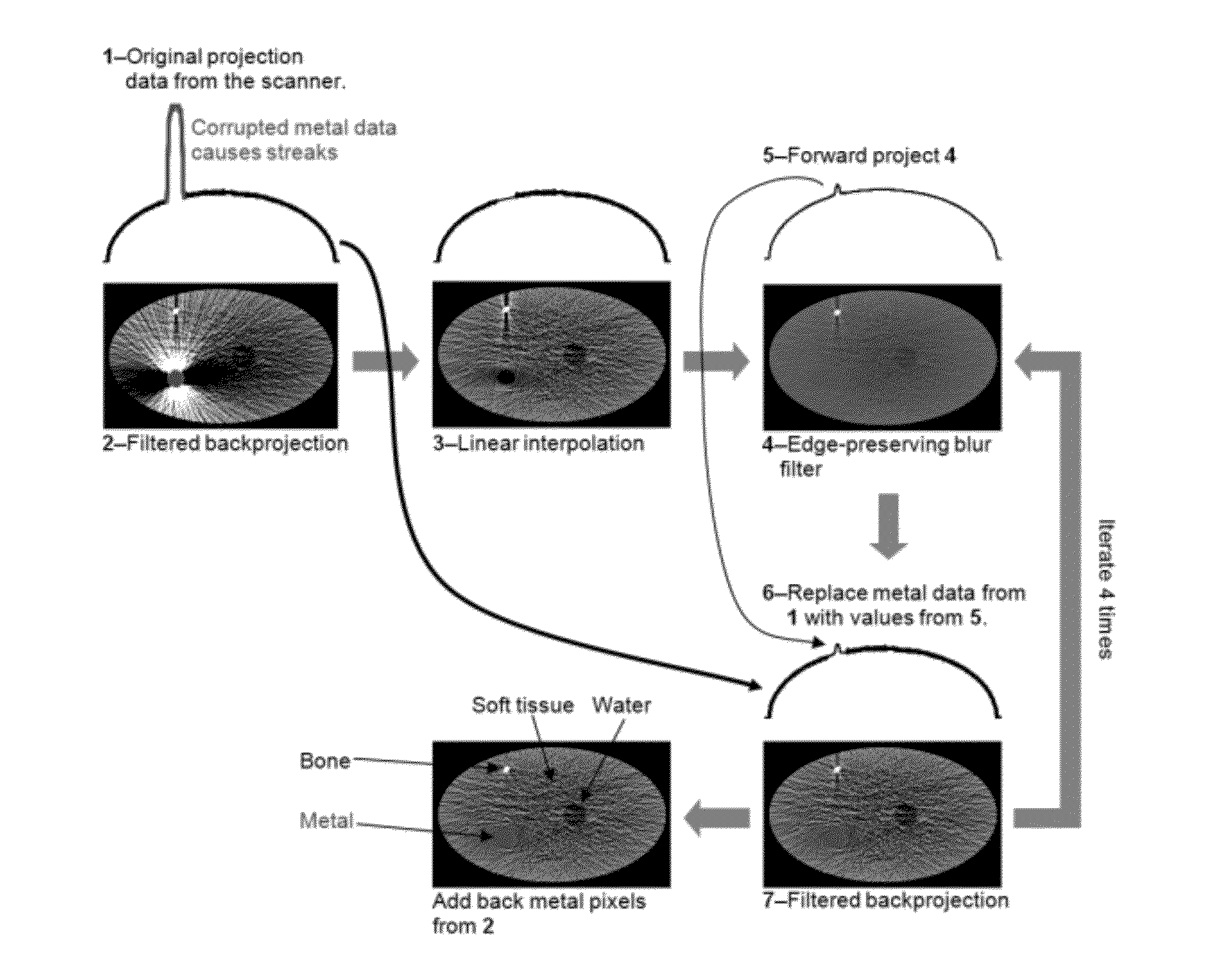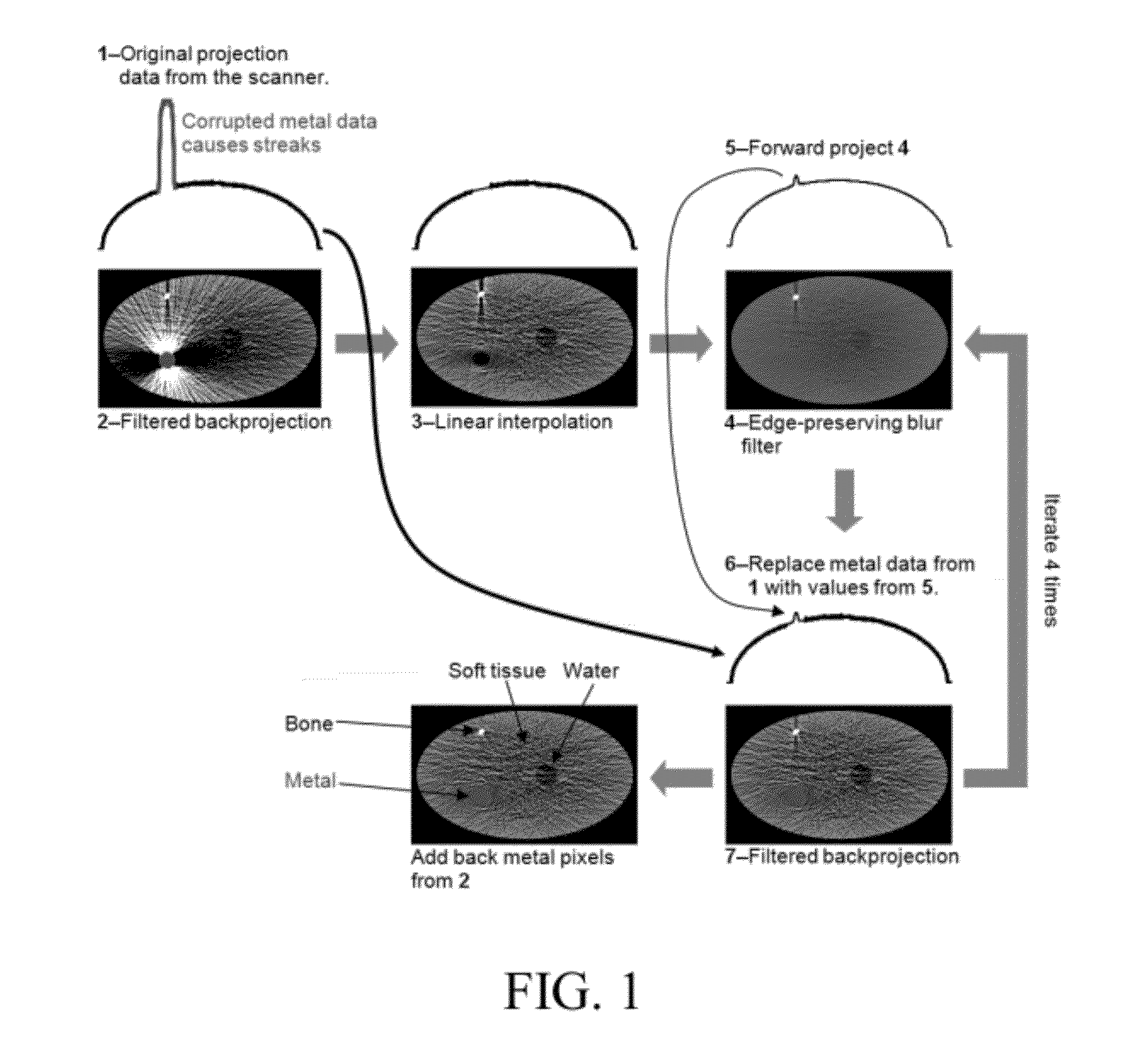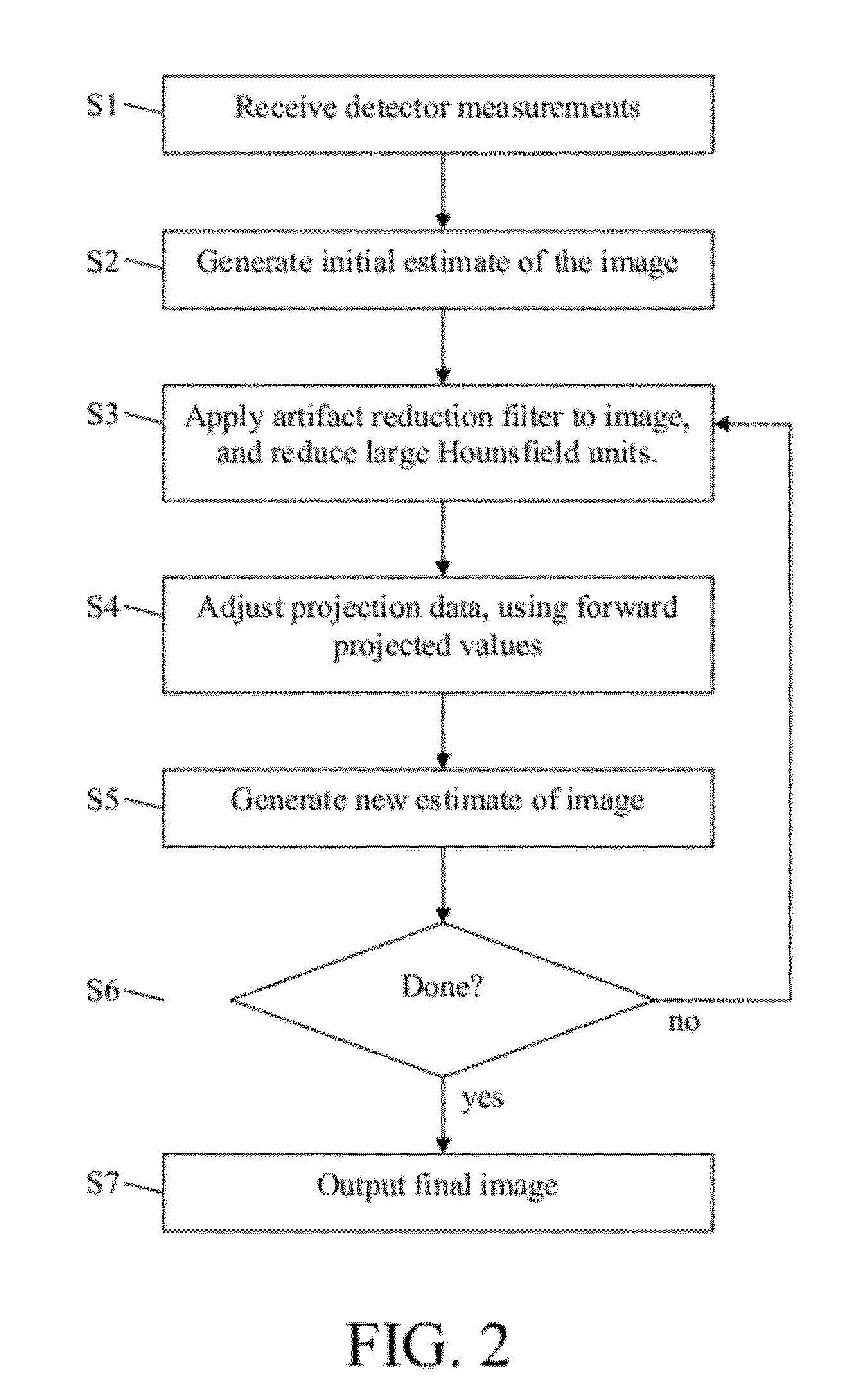Iterative reduction of artifacts in computed tomography images using forward projection and an edge-preserving blur filter
a computed tomography and blur filter technology, applied in image enhancement, instruments, applications, etc., can solve the problem that the forward projected values don't match the original projection data exactly, and achieve the effect of reducing noise and beam hardening artifacts, eliminating the risk of misclassification, and improving results
- Summary
- Abstract
- Description
- Claims
- Application Information
AI Technical Summary
Benefits of technology
Problems solved by technology
Method used
Image
Examples
Embodiment Construction
[0021]A flowchart showing one embodiment is illustrated in FIG. 2 and described in detail below.
[0022]Step S1. Projection data are obtained from a plurality of detectors configured to detect transmitted, emitted, or reflected photons, other particles, or other types of radiated energy. These measurements are made by a CT, PET, SPECT, or other type of scanner. If the detector measurements are not available (for example, if the manufacturer of the scanner does not allow access to the detector measurements), then experimental projection data can be estimated by forward projecting reconstructed images produced by the scanner. The streaks largely cancel out during the forward projection procedure, thus resulting in a reasonably accurate estimate of the experimental projection data.
[0023]Step S2. Generate an initial estimate of the image.
[0024]The projection data can be pre-processed to account for beam-hardening, scatter, refraction, diffraction, or other phenomena. Furthermore, low phot...
PUM
 Login to View More
Login to View More Abstract
Description
Claims
Application Information
 Login to View More
Login to View More - R&D
- Intellectual Property
- Life Sciences
- Materials
- Tech Scout
- Unparalleled Data Quality
- Higher Quality Content
- 60% Fewer Hallucinations
Browse by: Latest US Patents, China's latest patents, Technical Efficacy Thesaurus, Application Domain, Technology Topic, Popular Technical Reports.
© 2025 PatSnap. All rights reserved.Legal|Privacy policy|Modern Slavery Act Transparency Statement|Sitemap|About US| Contact US: help@patsnap.com



